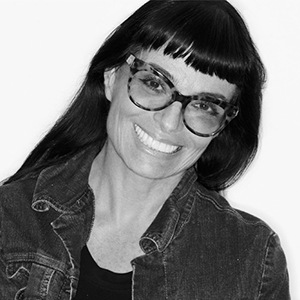Norma Kamali is a longtime wellness aficionado, a fashion legend, and—on everything from health to hemlines—a forward thinker. Now, with 2019 only days away, she's about to do something unprecedented: She's making her clothing more accessible to all genders. Here, Kamali explains how the '70s underground, genderfluidity, fashion, and New York City have added up to a moment that's very now.
Back in the '70s, I was presenting a women's collection, and yet, half of the clients in my New York store were men. They were expressing their personal style through all types of clothing—as was pretty much everyone at the time.
If you weren't there, I must give a little background. Back then, New York was a dangerous place. The city was basically bankrupt, storefronts were heavily gated, and people were fleeing for a safer environment for their families. After dark, I would walk in the street rather than the sidewalk because muggings were so common.
Those were bad things, but good came out of this time, too. In the midst of this danger, NYC became a very inexpensive city for artists and creatives looking for affordable rents. It drew folks who felt out of place in their hometown, giving them a place where they could freely be themselves. At the same time, the feminist movement was coming alive again after decades of silence. Gay people were coming out and feeling safer to live their truth—yes, even in the unsafe environment of New York City.
It was a peak period in fashion and design—and so much of that was due to people letting go of rigid gender roles.
All of this made NYC a creative center with an excitement and energy I will never forget. It was a peak period in fashion and design—and so much of that was due to people letting go of rigid gender roles. Boys were feeling their feminine side, mixing it up in women's clothes and accessories (not to mention hair and makeup). Their style was authentic, original, and amazing. Mick Jagger was doing femme better than anyone and David Bowie was pushing boundaries. Meanwhile, women literally let go of their undergarments—no more structured bras, girdles, or garter belts—to embrace a braless, pantyless, rebellious freedom.

{{post.sponsorText}}
The idea of having a stylist didn't exist. It couldn't have! The very idea would be insulting because it would insinuate that you didn’t have an individual, expressive style of your own. It was the era of free spirits, and Studio 54 became the place where it all came together: the very rich, the celebrities, the artists, the writers, the creatives in fashion, film, music, and design.
Then, in the '80s, it all came to an abrupt end. AIDS shut it down in the most devastating, insidious attack on friends and family. With the loss of countless creative souls, we moved backwards. Styles shifted back to a more conservative, gender-conforming place. Men started wearing buzz-cut hair with flannel plaids, work boots, and pants. Push-up bras came back for women. A very strict definition of "male" and "female" characterized how we dressed, looked, and behaved.
View this post on InstagramA post shared by Norma Kamali (@normakamali) on
Fast forward to now, and for younger generations, AIDS is largely a story, not a personal memory. Perhaps that's one reason that we're back to questioning traditional gender stereotypes. Gen Z is all about blurred lines of gender—or no lines at all. Plenty of Gen Z couples share clothing without paying attention to whether a garment was designed for a man or a woman. In fashion, editorials are pushing the envelope—and more often than not, resulting in a smile. A great example is Playboy's feature with Ezra Miller in bunny ears, lingerie, and a jumpsuit. (Happy to report that the jumpsuit is mine!) Maybe it's a push to get us to recognize that despite differences, we are also, in many ways, so much more the same.
Now we're back to questioning traditional gender stereotypes.
With all of this new energy, the the future holds great promise for attitudes, behavior, and a balance that will evolve into a wonderful world of no hard lines. It's already happening in fashion. From the commercial side, shopping can be done not only in departments like men’s and women’s, but also in classifications like jackets, shirts, coats, and T-shirts.
I am a believer in this. I've always wanted to continue my dream of creative, authentic expression. Fifty years after the '70s, the time is right to do something that I hope will become the norm. Starting in January, on our website we will display a size chart that shows the women’s sizes and comparable men’s size. Our labels will have women’s on the left and men’s on the right. The goal is to make shopping more democratic, inclusive… and fun.
The healthy side of this is that there will be less that divides men and women. Sexuality can be liberated from stereotypes of the 1950s. Women can appeal to men and women in any way, and men can appeal to men and women. That's the kind of future I'd like to see.
 As an entrepreneur and designer, Norma Kamali has always found inspiration for her fashion collections in wellness, beauty, and women’s empowerment. These anchors have fueled her creation of the Stop Objectification movement, which encourages women to celebrate their strength and their bodies.
As an entrepreneur and designer, Norma Kamali has always found inspiration for her fashion collections in wellness, beauty, and women’s empowerment. These anchors have fueled her creation of the Stop Objectification movement, which encourages women to celebrate their strength and their bodies.
What should Norma write about next? Send your questions and suggestions to experts@www.wellandgood.com.
Loading More Posts...